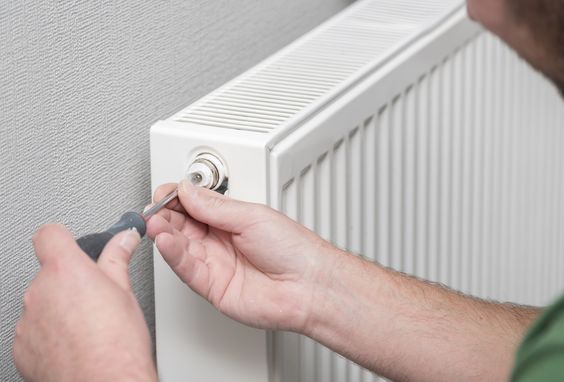How to Bleed a Radiator: 13 Steps

1. Gather the necessary tools: Before you begin, make sure you have a radiator key or flathead screwdriver, a small cup or container to catch any excess water, and a cloth or old towel to clean up any spills.
2. Turn off the heating system: To prevent any accidents, switch off your central heating system and allow the radiators to cool down completely.
3. Locate the bleed valve: Find the bleed valve on the radiator. It’s usually located at the top on one side and appears as a small square or round hole with a notch for the key or screwdriver.
4. Protect the surrounding area: Place the container under the bleed valve and put the cloth on the floor to catch any water that might escape during the process.
5. Insert the radiator key or screwdriver: Insert your radiator key into the bleed valve or use a flathead screwdriver if you do not have a key.
6. Slowly open the bleed valve: Turn the key or screwdriver counterclockwise (to the left) very slowly and carefully. You should hear air hissing as it escapes from the valve.
7. Release trapped air: Allow all of the trapped air to escape from the radiator until you see water begin to flow out of the valve.
8. Close the bleed valve: Once water appears, quickly but gently, turn your radiator key or screwdriver clockwise (to right) to close the valve.
9. Wipe away any excess water: Use your cloth or old towel to clean up any spilled water around and under the radiator.
10. Check other radiators in your home: Repeat this process for every radiator in your house to ensure all trapped air is removed from your heating system.
11. Turn on your heating system: Once all of your radiators have been bled successfully, switch on your central heating system and allow the radiators to heat up.
12. Check for cold spots: When your radiators are fully heated, carefully check each one for any remaining cold spots. If you find any, repeat steps 1-8 to remove any remaining air.
13. Monitor your boiler pressure: After bleeding all of your radiators, it’s essential to check the pressure in your boiler. If it’s low, consult your user manual and follow the instructions to top up the pressure as needed.
By following these 13 steps, you can successfully bleed your radiators, improving the heating efficiency in your home and helping to keep you warm during those colder months.






